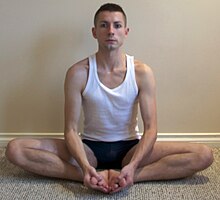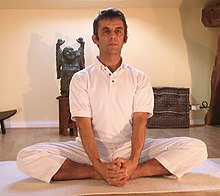This is an old revision of this page, as edited by Curb Chain (talk | contribs) at 07:49, 4 March 2012. The present address (URL) is a permanent link to this revision, which may differ significantly from the current revision.
Revision as of 07:49, 4 March 2012 by Curb Chain (talk | contribs)(diff) ← Previous revision | Latest revision (diff) | Newer revision → (diff)| Welcome to this sandbox page, a space to experiment with editing.
You can either edit the source code ("Edit source" tab above) or use VisualEditor ("Edit" tab above). Click the "Publish changes" button when finished. You can click "Show preview" to see a preview of your edits, or "Show changes" to see what you have changed. Anyone can edit this page and it is automatically cleared regularly (anything you write will not remain indefinitely). Click here to reset the sandbox. You can access your personal sandbox by clicking here, or using the "Sandbox" link in the top right.Creating an account gives you access to a personal sandbox, among other benefits. Do NOT, under any circumstances, place promotional, copyrighted, offensive, or libelous content in sandbox pages. Repeatedly doing so WILL get you blocked from editing. For more info about sandboxes, see Misplaced Pages:About the sandbox and Help:My sandbox. New to Misplaced Pages? See the contributing to Misplaced Pages page or our tutorial. Questions? Try the Teahouse!
| Shortcuts | |||||||||||||||||||||


Baddha Konasana (Template:Lang-sa; IAST: baddhakoṇāsana), Bound Angle Pose, or Cobbler Pose (after the typical sitting position of Indian cobblers when they work), is an asana.
Etymology
The name comes from the Sanskrit words baddha (बद्ध, baddha) meaning "bound", kona (कोण, koṇa) meaning "angle" or "split", and Asana (आसन, Āsana) meaning "posture" or "seat".
Description
From sitting position with both the legs outstretched forward, hands by the sides, palms resting on the ground, fingers together pointing forward, the legs are hinged at the knees so the soles of the feet meet. The legs are grasped at the ankles and folded more until the heels reach the perineum. The knees remain on the ground, the body erect and the gaze in front. The pose is held before coming back to the starting position. The thighs are stretched with care.
Benefits
It is a strong groin- and hip-opener and one of the few asanas that can be practiced comfortably soon after eating as long as the head is not rested on the floor. The pose is specially recommended for those suffering from urinary disorders. The pelvis, the abdomen and the back are stimulated by a plentiful blood supply.
It relieves sciatic pain and prevents hernia. If practised regularly, it relieves pain and heaviness in the testicles. For women, coupled with Sarvangasana, it checks irregular menses and helps the ovaries to function properly. Regular practise of this posture may be beneficial for the lumbar region, flat feet, high blood pressure, infertility and asthma.
Variations
Supta Baddha Koṇāsana, Cobbler's Pose in Lying Position, supta (सुप्त) meaning "supine" or "reclining".
See also
References
- "Yoga Journal - Bound Angle Pose". Retrieved 2011-04-09.
- Claire, Thomas (2003). Yoga for Men: Postures for Healthy, Stress-Free Living. Career Press. p. 170. ISBN 9781564146656. Retrieved 9 April 2011.
- "Baddha Konasana A - AshtangaYoga.info". Retrieved 2011-04-11.
- Sinha, S.C. (1 June 1996). Dictionary of Philosophy. Anmol Publications PVT. LTD. p. 18. ISBN 9788170412939. Retrieved 9 April 2011.
- Iyengar, B. K. S. (1 October 2005). Illustrated Light On Yoga. HarperCollins. ISBN 9788172236069. Retrieved 20 February 2012.
- Bhagat (2004). Alternative Therapies. Jaypee Brothers Publishers. p. 40. ISBN 9788180612206. Retrieved 9 April 2011.
Further reading
- Iyengar, B. K. S. (1 October 2005). Illustrated Light On Yoga. HarperCollins. ISBN 9788172236069. Retrieved 9 April 2011.
- Saraswati, Swami Satyananda (1 August 2003). Asana Pranayama Mudra Bandha. Nesma Books India. ISBN 9788186336144. Retrieved 9 April 2011.
- Saraswati, Swami Satyananda (January 2004). A Systematic Course in the Ancient Tantric Techniques of Yoga and Kriya. Nesma Books India. ISBN 9788185787084. Retrieved 9 April 2011.
External links
| Yoga | |||||||||||
|---|---|---|---|---|---|---|---|---|---|---|---|
| Subtle body | |||||||||||
| Hinduism |
| ||||||||||
| Buddhism |
| ||||||||||
| Modern |
| ||||||||||

